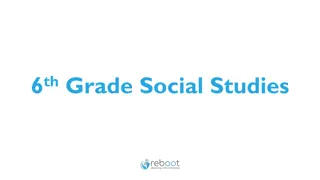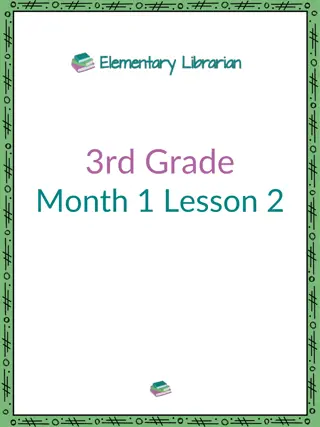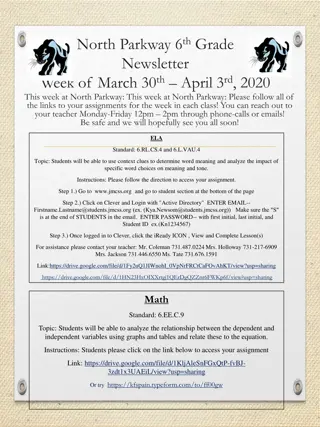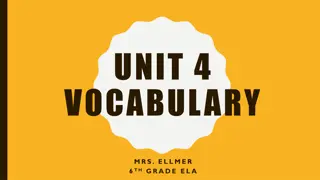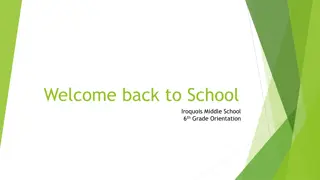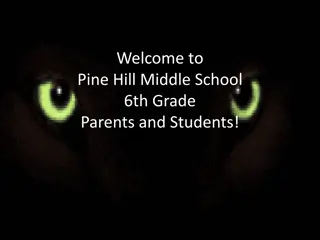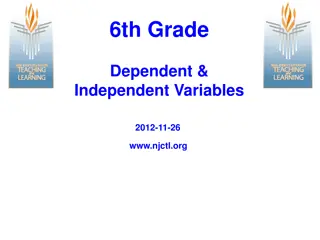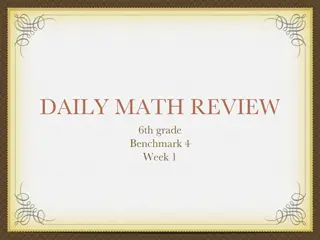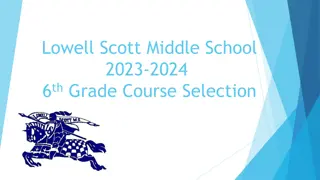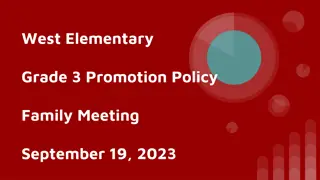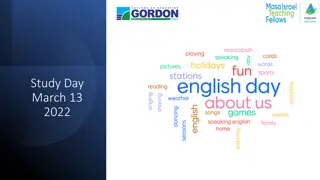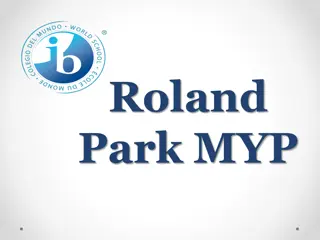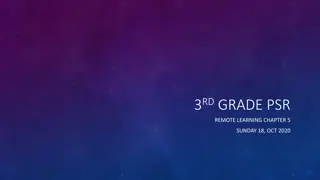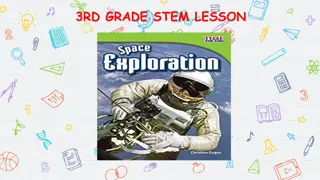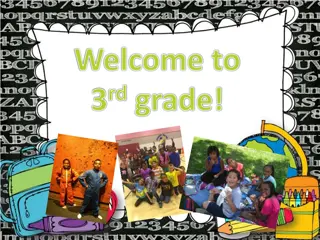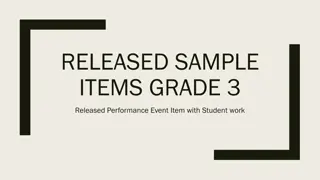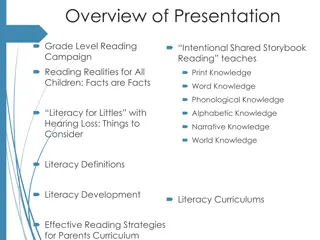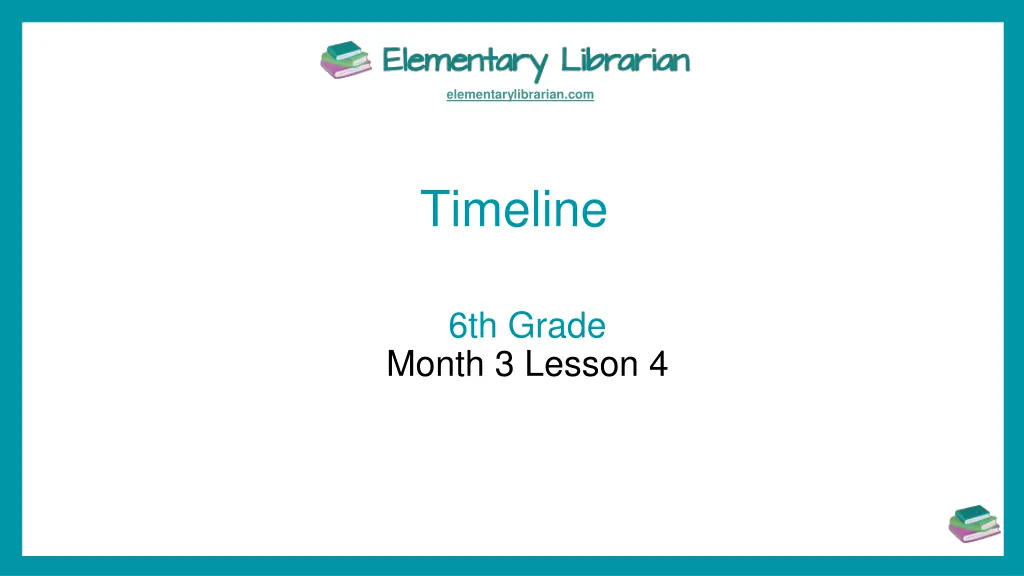
Understanding Timelines in 6th Grade Lesson 4
Explore the concept of timelines in 6th Grade Lesson 4, where students learn to arrange historical events in chronological order. From the invention of audio cassettes to the founding of Audible, students gain insight into the evolution of audiobooks. Enhance your understanding of timelines and their components such as dates, descriptions, headers, bars, and milestones. Get ready to create your own timeline with this engaging lesson!
Download Presentation

Please find below an Image/Link to download the presentation.
The content on the website is provided AS IS for your information and personal use only. It may not be sold, licensed, or shared on other websites without obtaining consent from the author. If you encounter any issues during the download, it is possible that the publisher has removed the file from their server.
You are allowed to download the files provided on this website for personal or commercial use, subject to the condition that they are used lawfully. All files are the property of their respective owners.
The content on the website is provided AS IS for your information and personal use only. It may not be sold, licensed, or shared on other websites without obtaining consent from the author.
E N D
Presentation Transcript
elementarylibrarian.com Timeline 6th Grade Month 3 Lesson 4
Learning Objective At the end of the lesson, students should be able to create a timeline. I can Statement I can create a timeline.
Lesson 4: Timeline Read the events and rearrange them by putting them in the correct order below. Audio Cassettes were invented, which was one of the reasons why audiobooks became popular. Audible, the first digital audiobook platform, was founded by Don Katz. The Library of Congress produced early recordings of books for Books for the Adult Blind Project. CDs were invented, which made audiobooks a road trip entertainment. Caedmon Records released readings of Dylan Thomas, which became one of the most well- known audio recordings.
Lesson 4: Timeline Read the events and rearrange them by putting them in the correct order below. 1 2 3 4 5
Lesson 4: Timeline Read the events and rearrange them by putting them in the correct order below. ANSWER GUIDE The Library of Congress produced early recordings of books for Books for the Adult Blind Project. 1 \ Caedmon Records released readings of Dylan Thomas, which became one of the most well-known audio recordings. 2 Audio Cassettes were invented, which was one of the reasons why audiobooks became popular. 3 CDs were invented, which made audiobooks a road trip entertainment. 4 Audible, the first digital audiobook platform, was founded by Don Katz. 5
Lesson 4: Timeline A timeline is another visual presentation of information. It shows the order or sequence of events in a process, story, or history. Timelines are a combination of graphic representations of the flow of events and texts that describe each event. Timelines are made up of four basic components: 1. Date The date is an essential guide to the flow of the event of when the event took place. information, for it serves as a 2. Descriptions Descriptions in a timeline are usually brief because the graphic representation already shows the relationship of the information included. Descriptions describe each event in the timeline.
Lesson 4: Timeline 3. Headers Headers provide more information about the timeline. Some timelines include images to add more information and visual interest. Timelines also include the following symbols: 1. Bar A bar can be a line bar or a time bar. It is used to represent the specific length of time as well as the order and progress of the event. 2. Milestone It is used to represent the milestone or the progress of the event.
Lesson 4: Timeline 3. Interval This is used to represent the time that elapses in the timeline. There are two basic types of timeline: 1. A Horizontal Timeline presents information in chronological order from the left-hand side of the page to the right-hand side. Interval October (1st half): The school searched for public libraries. November: The students toured four of the biggest public libraries. September: The school planned a trip to the public libraries. October (2nd half): The school contacted the public libraries.
Lesson 4: Timeline September: The school planned a trip to the public libraries. There are two basic types of timeline: A 2. Timeline information chronological with the first event written at the top of the page and the last event at the bottom. Vertical presents October (1st half): The school searched for public libraries. in October (2nd half): The school contacted the public libraries. order, November: The students toured four of the biggest public libraries.
Lesson 4: Timeline In some cases, vertical timelines that use arrows start the event from the bottom and will end right before the arrow to show its progress or sequence. November: The students toured four of the biggest public libraries. October (2nd half): The school contacted the public libraries. October (1st half): The school searched for public libraries. September: The school planned a trip to the public libraries.
Lesson 4: Timeline LET S TRY! Read the paragraph below and complete the timeline on the next page. Carrying one book already weighs someone s backpack. Imagine having more than that. It is inconvenient, not to mention the challenges in opening and reading a page whenever you want. It is good that nowadays, electronic books or eBooks allow one to carry and read a book more easily. EBooks are designed to be read on a compatible device by storing the text or book as an electronic file. Angela Ruiz Robles invented the world s first automated reader, which inspired electronic books today. Robles designed her prototype in 1949. In her design, she printed small texts onto spools, and these spools worked through compressed air. It was considered as the first automated reader.
Lesson 4: Timeline LET S TRY! Read the paragraph below and complete the timeline on the next page. When the Internet was invented, it became the birthplace of electronic books. Michael Hart, a student at the University of Illinois, was given unlimited time in the Materials Research Lab in 1971. He used this opportunity to type a copy of the Declaration of Independence. Six people initially downloaded it when Hart announced that it was available to download. He started to encode more texts. The next development was in 1987 when game creators from the East Gate Systems published their first hypertext fiction work titled Afternoon by Michael Joyce. It served as a demonstration of the new program called Story Space, a software used to create, edit, and read hypertext fiction.
Lesson 4: Timeline LET S TRY! Read the paragraph below and complete the timeline on the next page. In 1993, BiblioBytes spearheaded a website that sells eBooks over the Internet. Six years later, an American publisher, Simon & Schuster, created an imprint and iBooks. They became the first to publish books in eBook and print format. These books can be accessed at Oxford University Press through netLibrary. Then, the National Institute of Standards and Technology in America held its first eBook conference. Dick Brass of Microsoft declared eBooks as the future of reading. Although this has been the projection, eBooks still cannot replace the physicality of the books that spark the reader's interest.
Lesson 4: Timeline LET S TRY! Read the paragraph and complete the timeline. The History of EBooks Angela Ruiz Robles invented the world s first automated reader.
Lesson 4: Timeline LET S TRY! Read the paragraph and complete the timeline. The History of EBooks ANSWER GUIDE The National Institute of Standards and Technology in America held its first eBook conference. Michael Hart typed and uploaded a copy of the Declaration of Independence. BiblioBytes spearheaded a website that sells eBooks over the Internet. Game creators from the East Gate Systems published their first hypertext fiction. Angela Ruiz Robles invented the world s first automated reader. Simon & Schuster created an imprint and iBooks.



